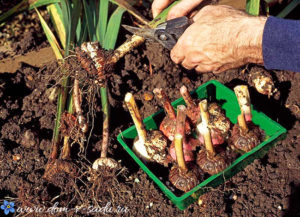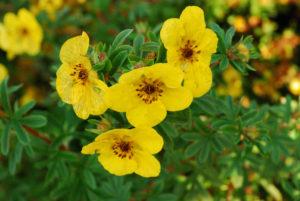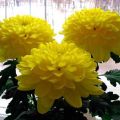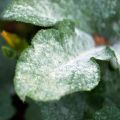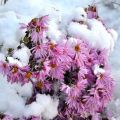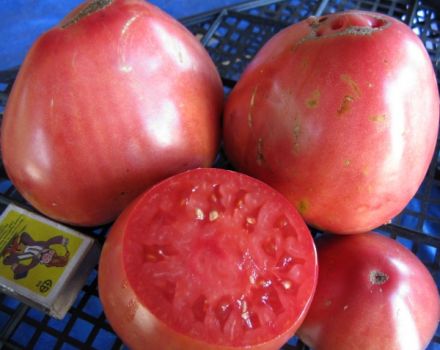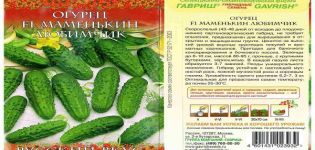Description of 27 varieties and varieties of chamomile chrysanthemums, planting and care
Chamomile chrysanthemums are grown to decorate gardens and premises. Initially, these plants appeared in Asian countries. They were used as indoor crops. However, at the end of the 18th century, flowers came to Europe. Many interesting varieties are known today. They differ in color, size and other parameters. This allows flower growers to choose the best option for decorating their flower beds.
Content
- 1 Description and features
- 2 How do they differ from real daisies?
- 3 Varieties and types
- 3.1 Santini
- 3.2 Yellow Ring
- 3.3 Lunetta Orange
- 3.4 Madiba Rose
- 3.5 Santini Tedca
- 3.6 Santini Marimo
- 3.7 Bacardi
- 3.8 Cream
- 3.9 Bordeaux
- 3.10 Sleigh
- 3.11 Arlene
- 3.12 Viscose
- 3.13 Lisboa
- 3.14 Monagua
- 3.15 Orlina
- 3.16 Inga
- 3.17 Camilla
- 3.18 White Lacemaker
- 3.19 Prosseco
- 3.20 Pink daisy
- 3.21 Red daisy
- 3.22 Malchish-Kibalchish
- 3.23 Ariel
- 3.24 Isabel
- 3.25 Evening lights
- 3.26 Alyonushka
- 3.27 Hebe
- 4 Features of reproduction and cultivation
- 5 Care rules
- 6 How to grow potted houses
- 7 Prevention of diseases and pests
- 8 Application in landscape design
- 9 Medical use
Description and features
Chamomile chrysanthemums are perennial bushy plants that are decorated with umbrella inflorescences. The culture belongs to the Astrov family. These plants are very popular in Asian countries. However, today they are increasingly common in Russia.
Chamomile chrysanthemums include non-double and semi-double varieties. They differ in the number of reed petals at the edges. A common characteristic is the presence of a disc of tubular flowers. They have different color options - white, red, yellow, pink.
Plants grow up to 1.5 meters. The leaves are characterized by large toothed fragments and are light green in color. They reach 4-10 centimeters in length and 5-6 in width.
How do they differ from real daisies?
The flowers of the plant resemble chamomile. That is why the culture got its name. At the same time, chrysanthemums are larger and look very impressive.
The color scheme is also varied. Culture is not only white. There are yellow, cream, red chrysanthemums. Also flowers are purple, pink, crimson.
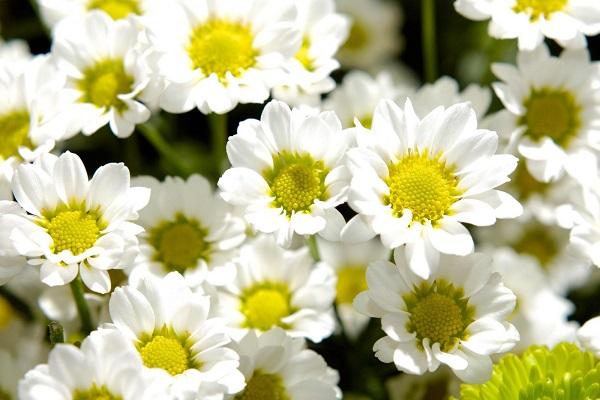
Varieties and types
Today, many varieties and varieties of such flowers are known. They all have certain characteristics.
Santini
These are beautiful shrubs that are often used to create flower beds. Excellent decorative properties make it possible to use plants in landscape design.
Yellow Ring
It is a minimalist variety that does not exceed 30 centimeters in height.The plant is compact in size and simple yellow inflorescences with a green center.
Lunetta Orange
This plant has unusual salmon petals. They are quite long along the edges, but inside they are small and dense. The inflorescences have a beautiful yellow-green hue.
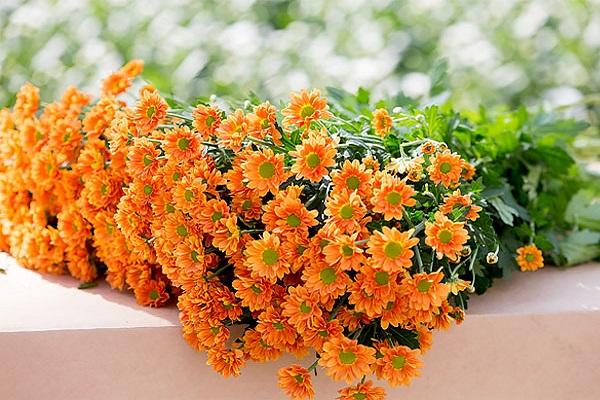
Madiba Rose
The plant is distinguished by simple inflorescences. They include pale pink petals and a yellow-green center. Flowers are no more than 3-4 centimeters.
Santini Tedca
This flower has a yellow color and a black center. In shape, it resembles a chamomile. The flowering culture is observed in September-October. It is a branch chrysanthemum that has tall bushes. They reach 1.2 meters.
Santini Marimo
The plant resembles a chamomile. It has an interesting green hue. The flowering culture begins in October.
Bacardi
This is a fairly common variety that is popular with many flower growers. It has many varieties.
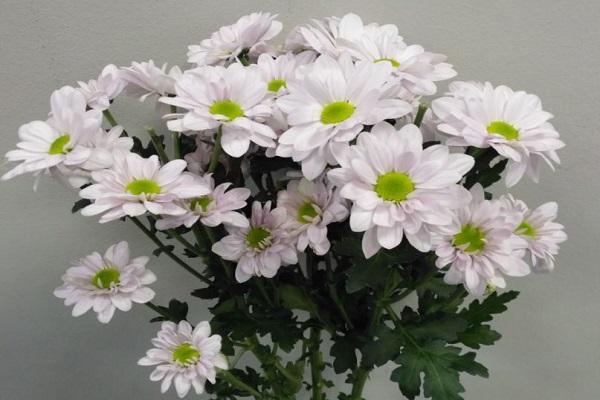
Cream
This variety is characterized by delicate creamy flowers. In combination with a green center and rich green leaves, they look very attractive. When creating compositions, such flowers are combined with other pastel colors or combined with more saturated shades.
Bordeaux
The plant is characterized by rather bright flowers - red and burgundy. Yellow-green centers stand out against their background. When creating floristic compositions, chrysanthemums are often complemented with white flowers.
Sleigh
These flowers look very bright and create a cheerful mood. They are distinguished by a rich yellow hue and organically fit into different floristic ensembles.
Arlene
This chamomile chrysanthemum has a rich yellow hue. The plant is extremely popular with flower growers.
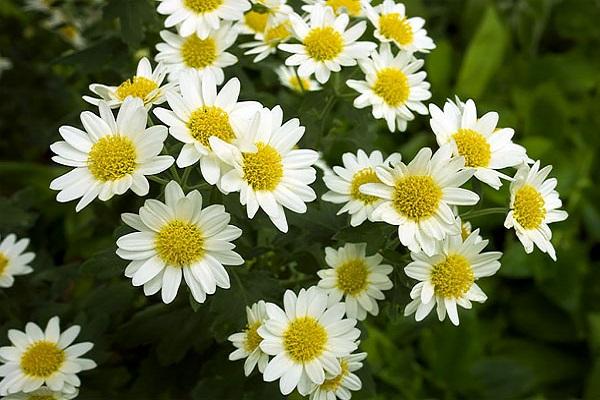
Viscose
The culture has flowers in the form of chamomile. They have a very interesting color scheme. Inflorescences have a lilac shade with a white border.
Lisboa
This flower is shaped like a chamomile. It is characterized by a burgundy hue and a white border.
Monagua
This variety is a shrub with red flowers. They resemble chamomile in appearance.
Orlina
This chrysanthemum has yellow buds. The plant is suitable for decorating rooms and creating beautiful bouquets. The flowers combine well with other buds.
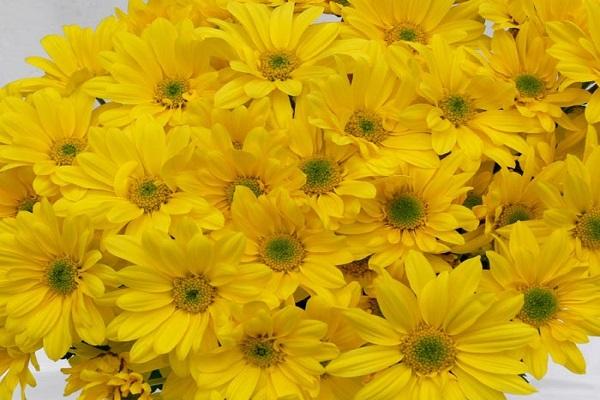
Inga
This shrub variety belongs to the Korean chrysanthemum varieties. It is characterized by anemone flowers. They are yellow in color and have tubular petals in the center and feathery ones at the edges. The bush reaches 70 centimeters.
Camilla
This is a semi-double bush chrysanthemum, which has inflorescences 4-5 centimeters in size. The flowers are white and have a yellow center. The culture is more like a chamomile.
White Lacemaker
This plant is a Korean non-terry variety. It is characterized by original flowers resembling spoons. They are decorated with long white petals and a large yellow center. Bushes grow up to 55-70 centimeters.
Prosseco
This culture is a bouquet variety. It is characterized by medium-sized flowers with a diameter of 5-6 centimeters. They are distinguished by a milky white shade of petals and a green center. The cut plant costs 2 weeks.
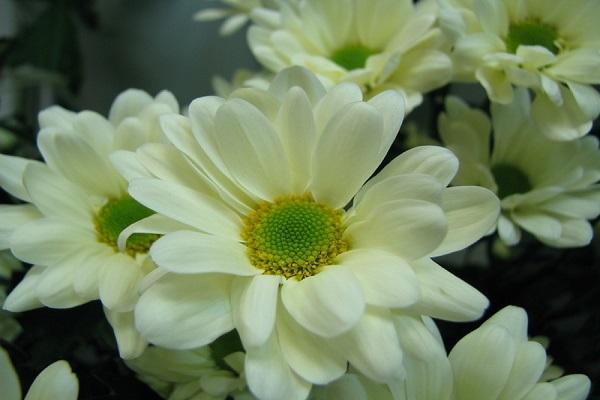
Pink daisy
This bush variety is compact in size and reaches 1 meter in height. The flowers have a rich pink hue and a yellow center. The size of the inflorescences is 4-6 centimeters. The culture is characterized by small leaves and straight stems. It begins to bloom in September. This process ends only with the onset of frost.
Red daisy
It is a non-double variety characterized by flat, elongated, scarlet petals. A yellow center can be seen in the center of the flower.Inflorescences reach 4-6 centimeters. The plant reaches 1 meter and begins to bloom in September.
Malchish-Kibalchish
This is a stunted crop that reaches 28 centimeters. The size of the flowers is 7 centimeters. They are flat and lilac-pink. There is an open yellow center inside. The bush begins to bloom profusely at the end of August.
Ariel
This variety resembles chamomile. It is characterized by voluminous bushes of 70-80 centimeters. The inflorescences are baskets and are 10-12 centimeters in diameter. White elongated petals surround the yellow center.
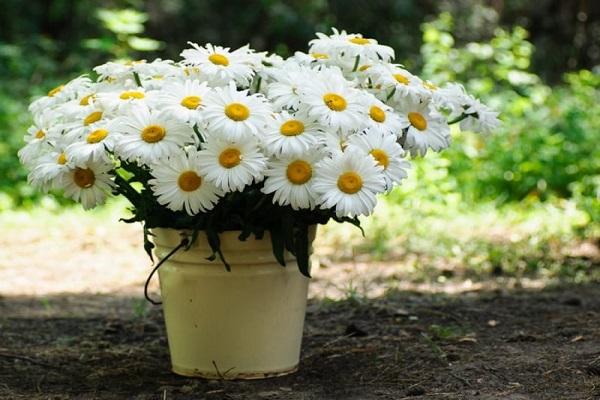
Isabel
This is an early variety that is easy to care for. Its flowers are characterized by a pink tint. The variety has semi-double inflorescences.
Evening lights
The plant reaches 35 centimeters and has a compact bush. It is characterized by red inflorescences. There is a yellow center in the center.
Alyonushka
The variety is characterized by a compact bush, reaching a height of 50 centimeters. The inflorescences have a non-double structure and a rich pink hue. The flowers are 5 centimeters in diameter.
Hebe
The plant is compact and reaches 55-65 centimeters. It is characterized by single-row baskets and lilac-pink flowers. Flowering begins in October and continues until frost.
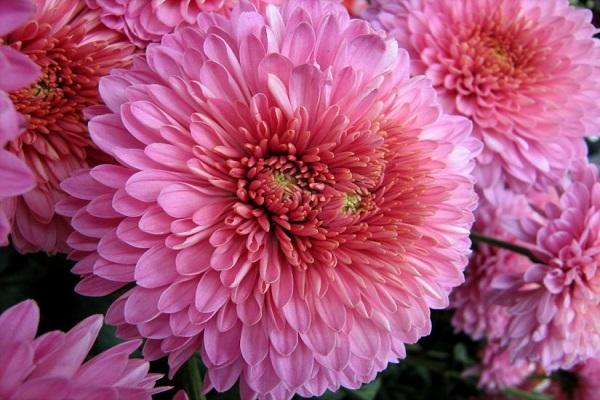
Features of reproduction and cultivation
To get a beautiful bush, he is recommended to provide complete and high-quality care.
Seed preparation
To speed up the emergence of sprouts, the seeds should be pre-soaked. However, they are usually planted dry in the ground.
Site selection and soil requirements
The plant is perfect for drained soil, which has a slightly acidic reaction. For chrysanthemums, it is important to choose a lighted place, since in the shade the flowers can be paler and smaller.
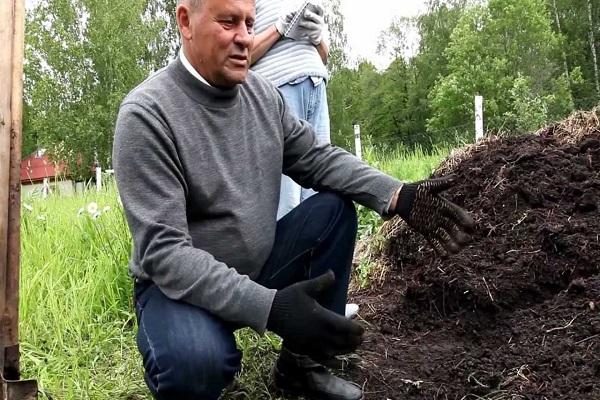
Growing seedlings
In this case, it is worth preparing special boxes and filling them with drainage. Then add nutritious soil and make furrows, keeping a distance of 5 centimeters. Place the seeds on top and sprinkle them with soil. Drizzle, cover with plastic wrap and place in a warm and lighted place. When a pair of leaves appears, the plants can dive.
Landing in open ground
It is recommended to transplant seedlings into the ground in May. This is done in the absence of the risk of frost. 1 week before the procedure, the sprouts should be hardened. To do this, they are worn outside every day.
Preparation for wintering
At the end of autumn, it is worth cutting off all the leaves and stems. It is recommended to leave 8-10 centimeters of the plant above the soil surface. New shoots will grow from the stems next year. If you cut the chrysanthemums down to the ground, there will be significantly fewer stems in the spring.
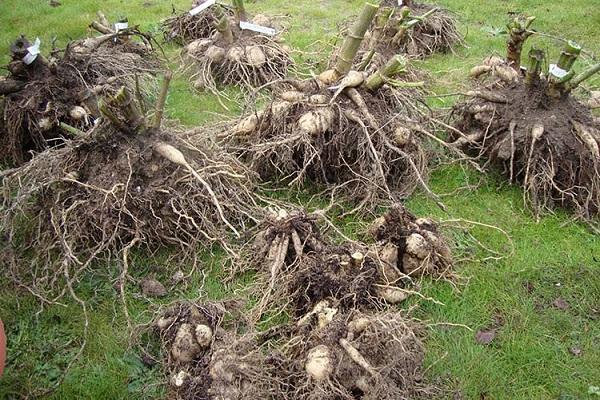
Care rules
To get a beautiful bush, he should provide full and high-quality care.
Fertilizing and feeding
During the development of the culture, it is recommended to alternate mineral and organic fertilizers. At the beginning of growth, it is worth using nitrogen preparations, which activate the growth of leaves. To make the flowering more lush, fertilizers based on phosphorus and potassium are used.
Watering
The lack of liquid makes the stems harder and worsens the appearance of the flowers. When watering, it is important to avoid getting water on the leaves. It is recommended to water the culture exclusively at the root.
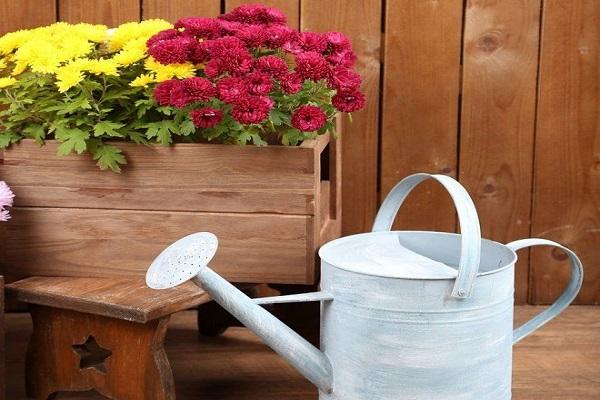
Transfer to a new location
If a chrysanthemum grows in one place for several years, it loses its decorative characteristics. Therefore, the bushes should be dug up and transplanted to a new site. During this manipulation, the plant is allowed to be divided into several parts. This will help get new crops.
Chrysanthemum is recommended to be planted in fertile soil, watered, hilled. It is worth adding nitrogen preparations every 2 weeks. Potassium and phosphorus are used before flowering.
Pruning
To make the plant more lush, it is recommended to prune it in time. This is done during active growth. To extend the flowering period, it is worth getting rid of yellow leaves and wilted buds.
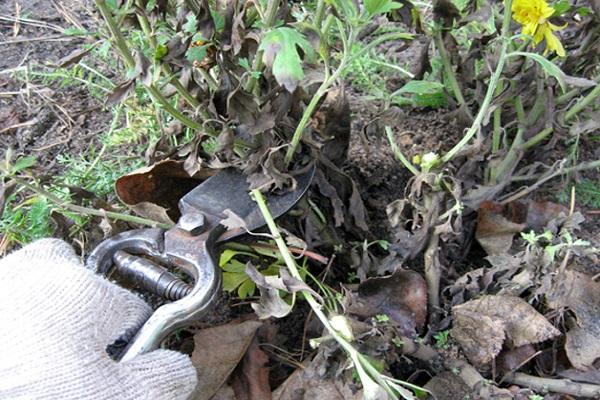
How to grow potted houses
Recently, more and more chamomile chrysanthemums are bred in pots. For this, it is worth giving preference to varieties that are compact and small roots. You should definitely choose a spacious container and provide it with a drainage layer.
Prevention of diseases and pests
Lack of proper care leads to the development of diseases and pest attacks. For preventive purposes, the bush is treated with fungicides. This is done in early spring and before the buds appear.
To avoid insect activity, systemic insecticides are used.
To prevent diseases and parasite attacks, it is worth maintaining the distance between plantings, keeping the flower garden clean and systematically inspecting the plantings.

Application in landscape design
Chamomile chrysanthemums fit well into flower beds. They can be used to decorate terraces and balconies. When planting, it is worth using several varieties at once, which will help to get a beautiful color composition.
Chrysanthemums look good with other flowers - asters, hydrangeas. They can be planted in front of evergreen bushes.
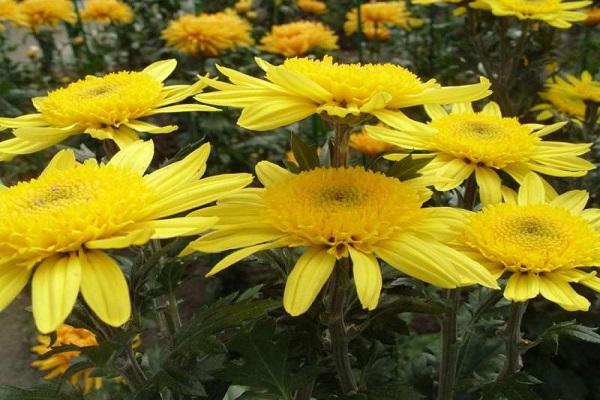
Medical use
Chamomile chrysanthemums have many beneficial properties. They are used to treat colds. Eating flowers helps fight off parasites. Also, the plant is used to eliminate malaria, alcohol addiction, eye pathologies.
The culture can be used to prevent stomach diseases and pathologies of the cardiovascular system. Local application of chrysanthemum-based products helps to cope with pain arising from diseases of the musculoskeletal system.
Chamomile chrysanthemums have excellent decorative properties. This kind of culture is actively used in landscape design. To get a beautiful bush, it is recommended to properly care for the flower.
